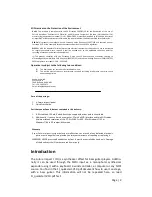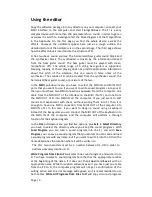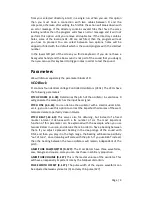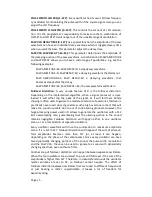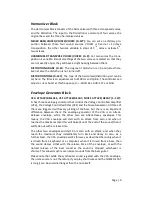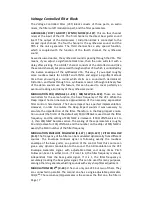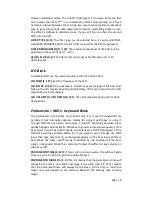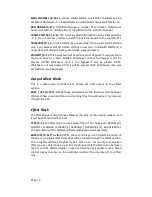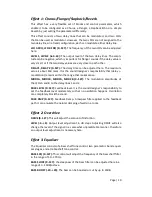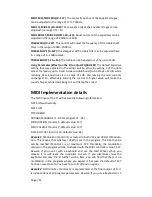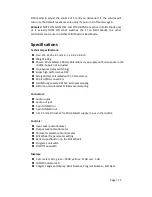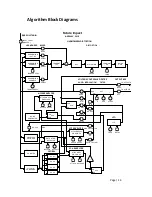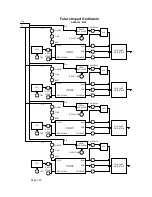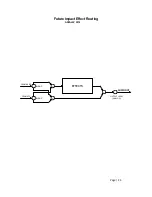
Page | 10
Effect 1 : Chorus/Flanger/Slapback/Reverb
This effect has a very flexible set of blocks and control parameters, which
enable it to be configured as a Chorus, a Flanger, a Slapback Echo or a simple
Reverb by just setting the parameters differently.
This effect consists of two delay lines that can be modulated, and two LFOs
that can be used as modulator. However, the two LFOs are not assigned to the
two delay lines in a fixed configuration, each can modulate either delay line.
LFO A FRQ, LFO B FRQ (0..127):
The frequency of the two LFOs can be adjusted
here.
LEVEL1, LEVEL2 (-64..63):
The output level of the two delay lines. The ampli-
tude can be negative, which is important for flanger sounds if the delay value is
very small, or if the two delay values are very close to each other.
DELAY1, DELAY2 (0..127):
The delay time can be adjusted here. The maximum
value is about 160 msec. It is the sound designer’s responsibility that (delay +-
modulation) remains within the range that makes sense.
MOD1A, MOD1B, MOD2A, MOD2B (0..127):
The modulation amplitudes of
the LFOs A and B to the delay lines 1 and 2.
FBCK LEVEL (0..127):
Feedback level. It is the sound designer’s responsibility to
set the feedback level moderately so that no oscillation happens. Oscillation
can completely block the sound.
FBCK DMP (0..127):
Feedback Damp. A lowpass filter applied to the feedback
path. It can emulate the natural damping of walls in a room.
Effect 2: Overdrive
DRIVE (0..127):
This will adjust the amount of distortion.
LEVEL (-6..+6):
Output level adjustment in dB steps. Adjusting DRIVE will also
change the level of the signal in a somewhat unpredictable manner, therefore
an output level adjustment is necessary here.
Effect 3: Equalizer
The Equalizer consists of a bass shelf tone control, two parametric band equali-
zer stages, and a treble shelf tone control.
BASS FRQ (0..127):
This control will adjust the frequency of the bass shelf filter
in the range of 50...270 Hz.
BASS SLOPE (0..127):
the steepness of the bass filter can be adjusted here in a
range of 3...10dB/octave.
BASS BOOST (-20..+20):
The bass can be boosted or cut by up to 20dB.


